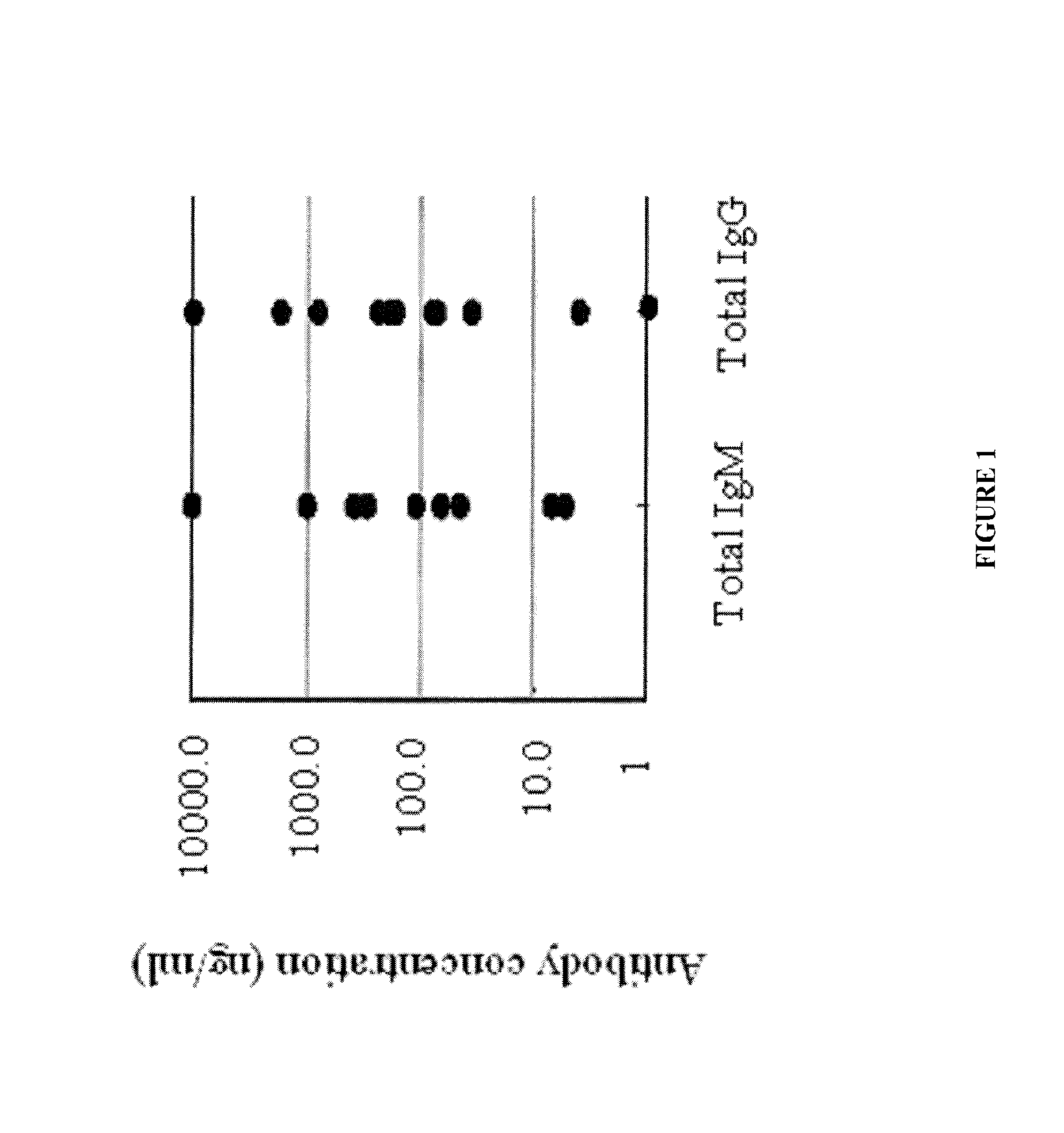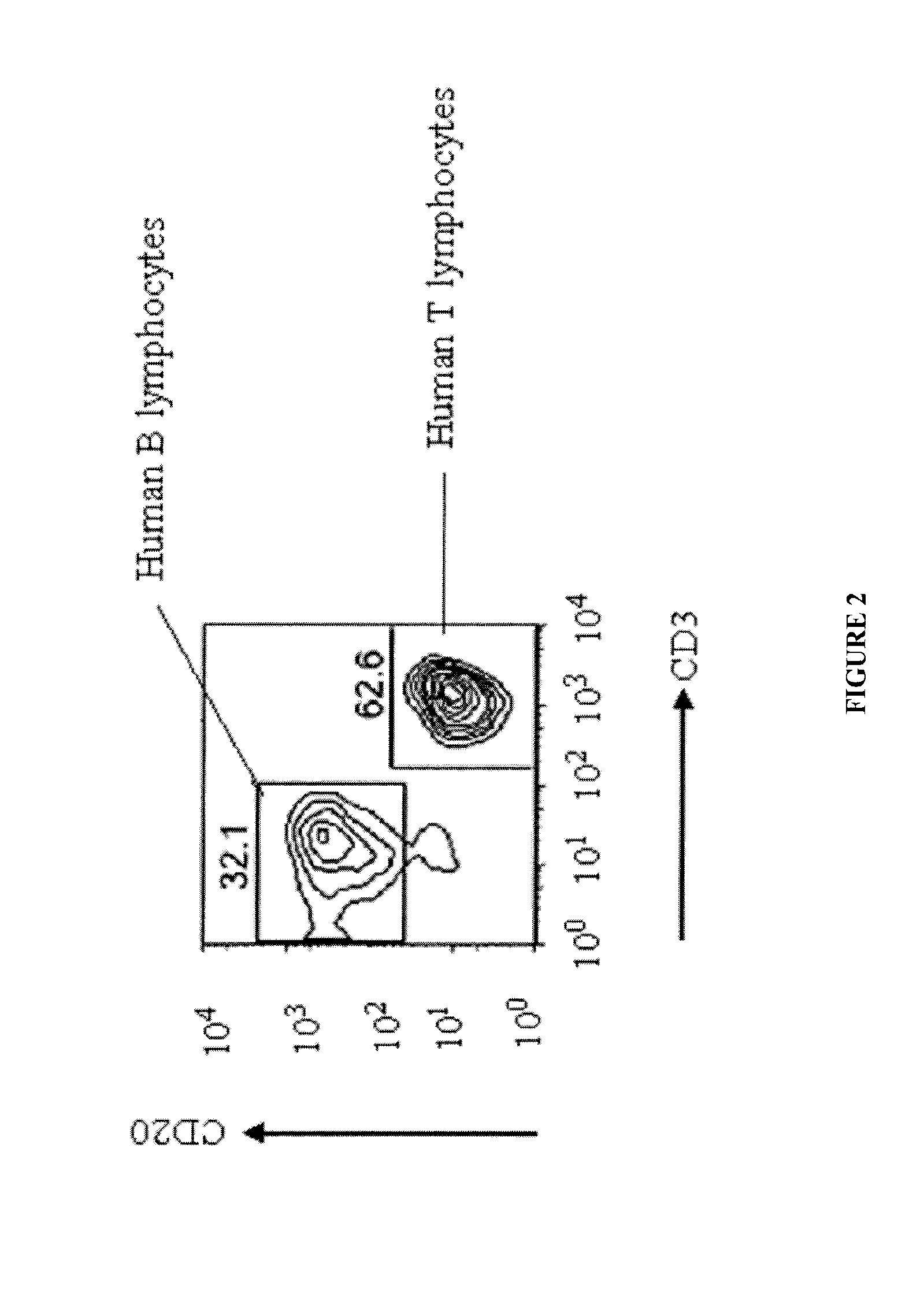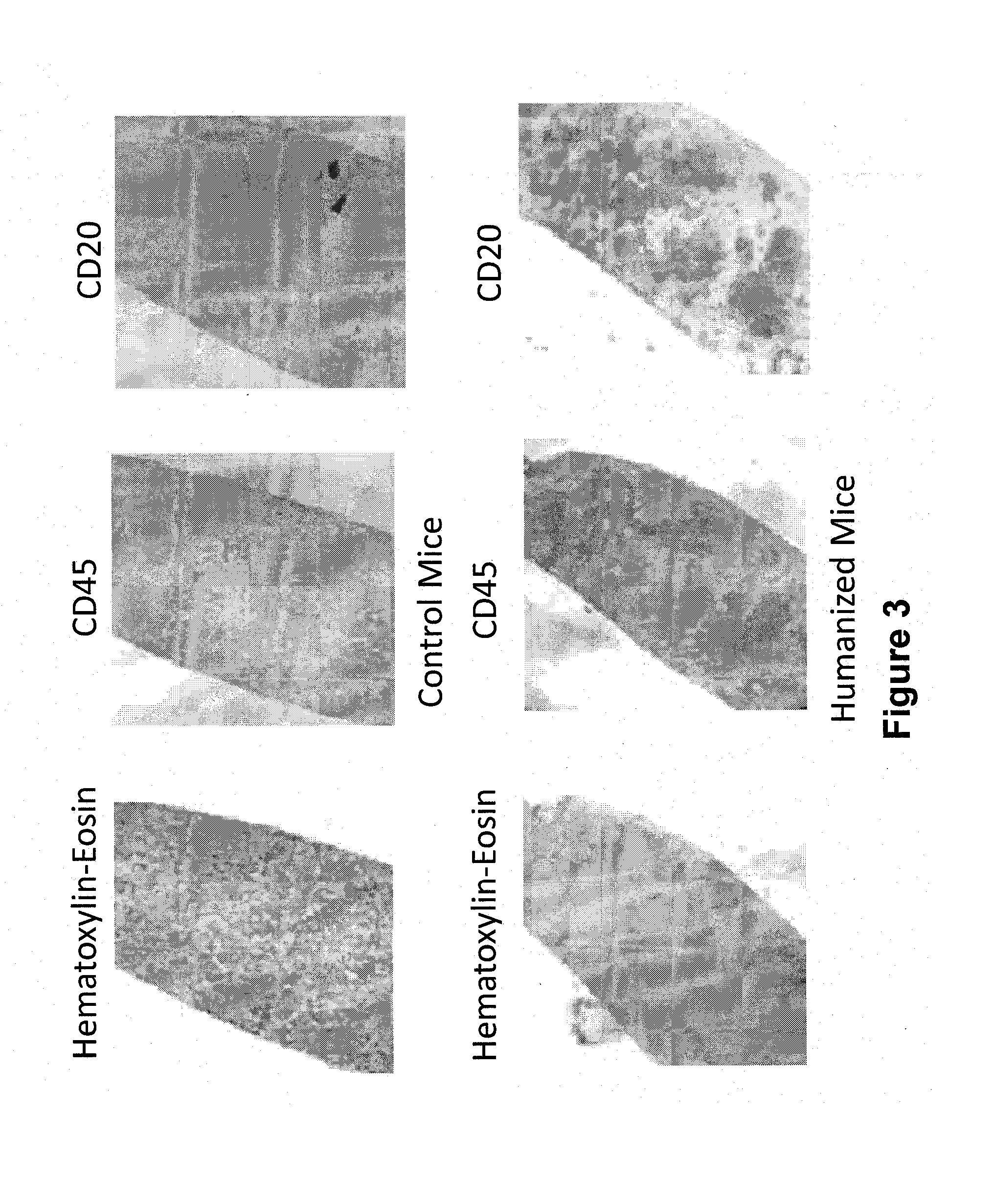Method of generating human monoclonal antibodies
a monoclonal antibody and human antibody technology, applied in the field of human antibodies, can solve the problems of low engraftment in these models, low yield of viable hybrids with these heteromyelomas, and poor quantitative t cell reconstitution
- Summary
- Abstract
- Description
- Claims
- Application Information
AI Technical Summary
Benefits of technology
Problems solved by technology
Method used
Image
Examples
example 1
Preparation of Splenocytes and Heteromyelomas for Use in Generating Anti-CD44 (IMP11) Human Antibody-Producing Hybridoma Cells
[0153]Mice were injected with CD34+ cells and immunized with antigen (CD44), according to the materials and methods, and then the mice's immune response (including antibody production and adaptive immune response) was characterized in vitro.
[0154]Levels of IgM and IgG were measured in mouse sera (FIG. 1). Once it was confirmed that antibodies were being produced in the mice, spleens were harvested from the mice and stained with anti-human CD45, CD20, and CD3 to determine the presence of splenocytes (hematopoietic stem cells, B lymphocytes and T cells) using FACS (FIG. 2) and immunohistochemistry (FIG. 3). Samples were gated on live lymphocytes by forward and side scatter and on CD45 positive cells (FIG. 2).
[0155]To generate a heteromyeloma for using in generating a hybridoma, a somatic fusion between a myeloma and a human B lymphoma is carried out in the pres...
example 2
Screening and Validating Antibody Functional Activity
[0160]The monoclonal antibodies generated in Example 1 are sequenced to determine whether the sequences are human sequences. ELISA tests were performed to screen for the antibody by coating the ELISA plates with the CD44 antigen (FIG. 4). Antibody function is further determined using the same process in order to determine antibody binding ability. Moreover, epitope mapping is carried out to analyze specificity of antibody binding.
[0161]Further, the affinity of binding of the monoclonal antibody to the target antigen is determined using an ELISA-based affinity assay.
example 3
Kaplan Meier Survival Analysis after Treatment with Mab IMP11 (Anti-CD44) in Human AML1 Mouse Model
[0162]Human AML1 mouse models were treated with IMP 11 (anti-CD44) monoclonal antibodies (MAbs) (N=10) and IgG1 control (N=10), and a significant difference was found in percent survival between the IMP11 group and controls. There was a significant drop in percent survival in the IgG1 control group. By approximately day 47 post-treatment, survival began to significantly drop off, whereas in the IMP11-treated group, 100% survival of the mice persisted to a point beyond the experimentally determined length of time (until approximately 80 days), as opposed to the control group whose survival steadily declined until there was little to no survival by this same time period (FIG. 5).
PUM
| Property | Measurement | Unit |
|---|---|---|
| volume | aaaaa | aaaaa |
| temperature | aaaaa | aaaaa |
| time | aaaaa | aaaaa |
Abstract
Description
Claims
Application Information
 Login to View More
Login to View More - R&D
- Intellectual Property
- Life Sciences
- Materials
- Tech Scout
- Unparalleled Data Quality
- Higher Quality Content
- 60% Fewer Hallucinations
Browse by: Latest US Patents, China's latest patents, Technical Efficacy Thesaurus, Application Domain, Technology Topic, Popular Technical Reports.
© 2025 PatSnap. All rights reserved.Legal|Privacy policy|Modern Slavery Act Transparency Statement|Sitemap|About US| Contact US: help@patsnap.com



